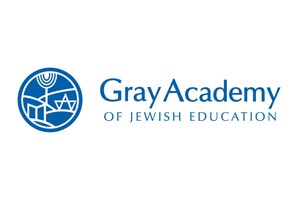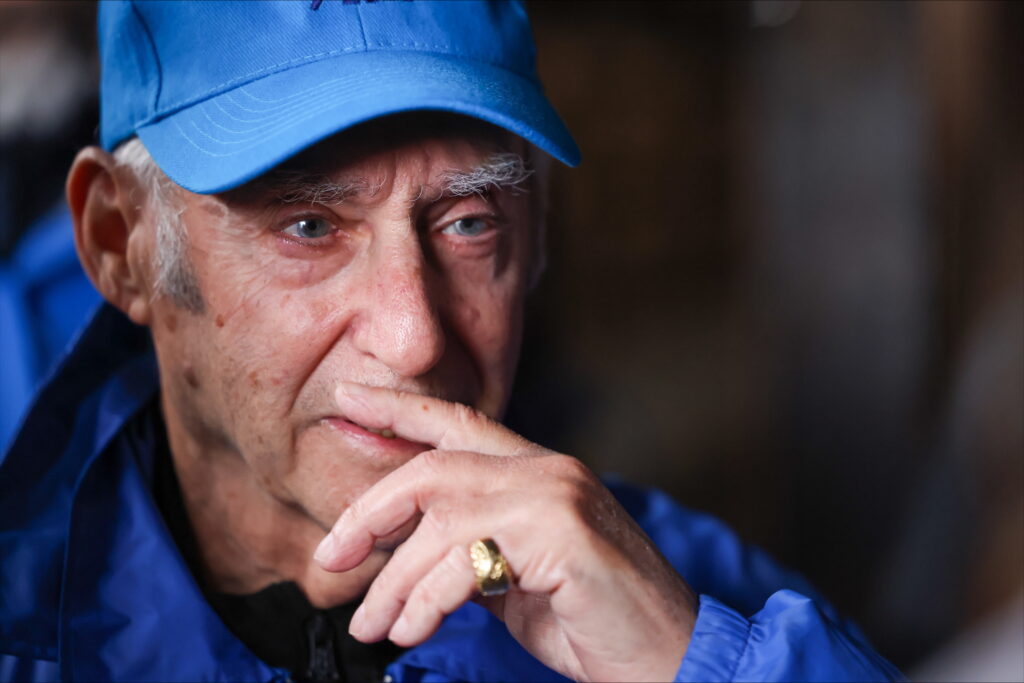Local News
Gray Academy pivots once again to “Gray Away” during provincially mandated week of remote learning
 By BERNIE BELLAN With the decision by the provincial government to require online learning in all classrooms for students from K-12 from January 10-14, Gray Academy was well positioned to implement what it began to refer to as “Gray Away” when it was first introduced in May 2020. As well, the school has also taken steps to provide all parents of students in JK-6 with test kits that the parents are being asked to administer every three days beginning January 16.
By BERNIE BELLAN With the decision by the provincial government to require online learning in all classrooms for students from K-12 from January 10-14, Gray Academy was well positioned to implement what it began to refer to as “Gray Away” when it was first introduced in May 2020. As well, the school has also taken steps to provide all parents of students in JK-6 with test kits that the parents are being asked to administer every three days beginning January 16.
‘“Gray Away” was reintroduced this past week, from kindergarten to Grade 12,” Lori Binder, Head of School at Gray Academy, said during a phone interview.
“Our junior kindergarten students have been able to remain on site,” Lori added, “since JK falls under early learning child care.”
As well, similar to all other schools in the province, Lori noted that “we are supporting children of critical service workers or those students who need supports. We’ve had about 80 kids in the building even during Gray Away. Most of those kids have been K-6, along with junior kindergarten – and just a sprinkling in the high school.”
“All teachers have been on site, so remote learning was taught from the school…Even though we were made aware [remote learning] was a possibility, before vacation was over, staff got together in a Zoom meeting to be prepared for the transition.”
As well, Lori added, “prior to break we sent stuff home with kids because Omicron was spreading – so at least we were able to prepare most of our students to have their belongings they needed for learning.”
Something else that the school will be able to give students is rapid test kits for all students (including those in JK) up to Grade 6. Lori noted that the province had supplied the school with sufficient quantities (five tests per student) of rapid test kits for all students in K-6 to be tested every three days. With school set to resume in person on January 17, parents are to pick up the test kits on Sunday, January 16.
As well, Lori noted, “We were given a supply of tests from BB Camp” that had been left over following the summer session of that camp. Those tests were given to parents and have been used for students in Junior Kindergarten, so that they, could also be tested every three days. The test kits were also made available for Critical Care Workers whose children were in school the week of January 10-14 for in person learning.
Parents of all students in JK-6 are being asked to administer tests to their children prior to the resumption of in person learning as an additional layer to mitigate the risk of the spread of COVID upon their return. With five rapid tests for each student to take every three days, this will help for the first two weeks back after the long break from in person learning.
As far as test kits for kids in 7-12 are concerned, Lori said the province did not provide schools with kits to send home as high school-aged students are eligible to be vaccinated. At Gray Academy, students aged 12 and up are all fully vaccinated. (Still, in light of the Omicron variant infecting fully vaccinated individuals, I wonder whether the province might now be giving consideration to giving students who may have received two vaccines test kits as welll? Anyone under 18 is not eligible for a booster shot in Canada, although they could be in the U.S.)
I asked Lori when was the last time Gray Academy had been forced to implement remote learning?
“It was May and June of 2021,” she answered.
When Gray Academy first introduced “Gray Away” in March 2020, however, it was for all students, including Junior Kindergarten. Since then, there’s been the clear realization that “learning remotely is not effective for three and four-year-olds,” Lori explained.
As it was when remote learning was first introduced almost two years ago, classes are structured similar to how they would be in person, with breaks structured into schedules. “In elementary it’s tweaked just a little bit so that there’s more time to move around between classes,” Lori added.
I wondered, when school began in the fall, whether Gray Academy was still maintaining the strict protocols that had been in force all last school year, i.e., social distancing, students remaining in cohorts, no movement of students between classrooms (with teachers moving instead from class to class)?
Lori said that Gray Academy had been adhering to stricter rules than were nominally dictated by the province. When school began in the fall, she explained, “schools were in ‘Yellow’; we were operating a little closer to ‘Orange. For example, our staff were in medical grade masks since September. Our students in elementary have been cohorted and had two metres between their desks.
“In high school this year, because all students were fully vaccinated (which, we noted back in September, made Gray Academy one of only two high schools which required that all students be vaccinated, the other being the University of Winnipeg Collegiate) – in late November it was the first time students began to move around the school again. That was an amazing, refreshing thing for our high school students – being able to move from class to class. For instance, they were actually able to take biology in the biology lab, rather than the biology teacher coming to them.”
It was around the same time that “the library reopened for the first time, singing started again – with masks on. That was before Omicron landed in Manitoba.”
I wondered whether there had been any cases of COVID in Gray Academy since the pandemic took hold here back in March 2020?
“From March 2020 to December 22, 2021, we had one case,” Lori answered.
“Then the school closed on December 22 for winter break; that’s when Omicron was sort of bubbling, and Friday, December 24 we started to receive reports of cases among individuals who had been at school. Even though we were on break we wanted to follow the protocols and communicate with our families. We reported to the (appropriate) grade and to the school that there was a positive case. Between December 22 and 10 days following, we reported on 15 cases after school closed which, in light of Omicron, is not surprising.”
“There was no indication of spread among those cases. They were sprinkled here and there, mostly in elementary, which again is not surprising, since our high school students and all staff are fully vaccinated.”
“Our goal was to keep our school community healthy by informing families of any potential exposure.”
I wanted to once again remind readers what the overall consequence was of requiring that all students aged 12 and up be vaccinated prior to the start of the school year in September, so I asked Lori whether there had been any further developments insofar as parents pulling their children from the school because they didn’t want to have them vaccinated.
Lori responded that the figures she reported to me back in September had remained the same: A total of only 11 families with 20 children who had been enrolled in Gray Academy last school year had withdrawn their children from the school as a result of the vaccination requirement.
Further, Lori reported that there had been complete compliance among staff with regard to getting vaccinated.
Given the uncertainty about students returning to in school education, I suggested to Lori that the most she and her staff can do is plan five days at a time.
“That’s right,” she said. “Five days at a time.”
Local News
Further to the Simkin Centre’s financial situation

By BERNIE BELLAN A while back I published an article about the deficit situation at the Simkin Centre. (You can read it at “Simkin Centre deficit situation.“) I was prompted to write that particular article after reading a piece written by Free Press Faith writer John Longhurst in the August 5 issue of the Free Press about the dire situation personal care homes in Winnipeg are in when it comes to trying to provide their residents with decent food.
Yet, Longhurst made one very serious mistake in his article when he wrote that the “provincial government, through the Winnipeg Regional Health Authority, has not increased the amount of funding it provides for care-home residents in Manitoba since 2009.”
In fact, the WRHA has given annual increases to personal care homes, but its allocations are not broken down by categories, such as food or salaries. As a spokesperson for the WRHA explained to me in an email: “PCHs receive per diem global operating funding based on the number of licensed beds they operate. This funding model is designed to support the full range of operating costs associated with resident care, including staffing, food services, utilities, building operations, and other day-to-day expenses.”
Now, one can make a perfectly valid argument that the level of funding from the WRHA has not kept up with inflation, especially inflation in food costs, but the Simkin Centre is in an even more precarious position because of the skyrocketing cost of kosher food.
“In recent years,” according to an article on the internet, “the cost of kosher food has increased significantly, often outpacing general food inflation due to unique supply chain pressures and specialized production requirements.”
Yet, when I asked Laurie Cerqueti how much maintaining a kosher facility has cost the Simkin Centre, as I noted in my previous article about the deficit situation at Simkin, she responded: “approximately $300,000 of our deficit was due to food services. I do not have a specific number as far as how much of the deficit is a result of kosher food…So really this is not a kosher food issue as much is it is an inflation and funding issue.”
One reader, however, after having read my article about the deficit situation at Simkin, had this to say: “In John Longhurst’s article on Aug 5, 2025 in the Free Press, Laurie (Cerqueti) was quoted as saying that the annual kosher meal costs at Simkin were $6070 per resident. At Bethania nursing home in 2023, the non-kosher meal costs in 2023 were quoted as $4056 per resident per year. Even allowing for a 15% increase for inflation over 2 years, the non-kosher food costs there would be $4664.40 or 24% lower than Simkin’s annual current kosher food costs. If Simkin served non-kosher food to 150 of its 200 residents and kosher food to half of its Jewish residents who wish to keep kosher, by my calculation it would save approximately $200,000/year. If all of Simkin’s Jewish residents wished to keep kosher, the annual savings would be slightly less at $141,000.”
But – let’s be honest: Even though many Jewish nursing homes in the US have adopted exactly that model of food service – where kosher food is available to those residents who would want it, otherwise the food served would be nonkosher, it appears that keeping Simkin kosher – even though 45% of its residents aren’t even Jewish – is a “sacred cow” (pun intended.)
So, if Simkin must remain kosher – even though maintaining it as a kosher facility is only adding to its accumulated deficit situation – which currently stands at $779,426 as of March 31, 2025,I wondered whether there were some other ways Simkin could address its deficit while still remaining kosher.
In response to my asking her how Simkin proposes to deal with its deficit situation, Laurie Cerqueti wrote: “There are other homes in worse financial position than us. There are 2 homes I am aware of that are in the process of handing over the keys to the WRHA as they are no longer financially sustainable.”
I wondered though, whether the Simkin Centre Foundation, which is managed by the Jewish Foundation of Manitoba might not be able to help the Simkin Centre reduce its deficit. According to the Jewish Foundation’s 2024 annual report, The Saul and Claribel Simkin Centre Foundation, which is managed by the Jewish Foundation, had a total value of $11,017,635.
The Jewish Foundation did distribute $565,078 to the Simkin Centre in 2024, but even so, I wondered whether it might be able to distribute more.
According to John Diamond, CEO of the Jewish Foundation, however, the bylaws of the Foundation dictate that no more than 5% of the value of a particular fund be distributed in any one year. There is one distinguishing characteristic about the Saul and Claribel Simkin Centre Foundation, in that a portion of their fund is “encroachable.” The encroachable capital is not owned by JFM. It is held in trust by JFM but is beneficially owned by Simkin, similar to a “bank deposit”. While held by the JFM, these funds are included in the calculation of Simkin’s annual distribution.
I asked John Diamond whether any consideration had been given to increasing the distribution that the Jewish Foundation could make to the Simkin Centre above the 5% limit that would normally apply to a particular fund under the Foundation’s management.
Here is what John wrote in response: “The Simkin does have an encroachable fund. That means that at their request, they can encroach on the capital of that fund only (with restrictions). This encroachment is not an increased distribution; rather, it represents a return of capital that also negatively affects the endowment’s future distributions.
”It is strongly recommended that encroachable funds not be used for operating expenses. If you encroach and spend the capital, the organization will receive fewer distribution dollars in the next year and every year as the capital base erodes. Therefore, the intent of encroachable funds is for capital projects, not recurring expenses.”
I asked Laurie Cerqueti whether there might be some consideration given to asking for an “encroachment” into the capital within the Saul and Claribel Simkin Centre Foundation?
She responded: “We are not in a position where we are needing to dip into the encroachable part of our endowment fund. Both of our Boards (the Simkin Centre board and the Saul and Claribel Simkin Centre Foundation board) are aware of our financial situation and we are all working together to move forward in a sustainable way.”
At the same time though, I wondered where donations to the Simkin Centre end up? Do they all end up in the Simkin Centre Foundation, for instance, I asked Laurie Cerqueti on December 15.
Her response back then was: “All donations go through our Foundation.”
I was somewhat surprised to read that answer, so I asked a follow-up question for clarification: “Do all donations made to the Simkin Centre end up in the Simkin Centre Foundation at the Jewish Foundation?”
The response this time was: “No they do not.”
So, I asked: “So, how do you decide which donations end up at the Foundation? Is there a formula?”
Laurie’s response was: “We have a mechanism in place for this and it is an internal matter.”
Finally, I asked how then, the Simkin Centre was financing its accumulated deficit? Was it through a “line of credit with a bank?” I wondered.
To date, I have yet to receive a response to that question. I admit that I am puzzled that a personal care home which has a sizeable foundation supporting it would not want to dip into the capital of that foundation when it is facing a financial predicament. Yes, I can see wanting the value of the foundation to grow – but that’s for the future. I don’t know whether I’d call a $779,425 deficit a crisis; that’s for others to determine, but it seems pretty serious to me.
One area that I didn’t even touch upon in this article, though – and it’s something I’ve written about time and time again, is the quality of the food at the Simkin Centre.
To end this, I’ll refer to a quote Laurie Cerqueti gave to John Longhurst when he wrote his article about the problems personal care homes in Winnipeg are facing: “When it comes to her food budget, ‘we can’t keep making the same number of bricks with less straw.’ “
Local News
Exclusive: Security Enhancement Fund to be announced by Province in coming days

By NOAH STRAUSS The province is set to announce a new program called the Security Enhancement Fund, which
will provide funding to religious and faith groups to improve security at institutions such as
synagogues and mosques. In an exclusive interview, Minister of Justice Matt Wiebe outlined the
plan and detailed what the province has already done to help protect Jewish Manitobans.
“What we want to do is to be able to provide the community with the kind of tools that they need
to stay safe and to ensure that everyone in the community feels safe,” said Wiebe.
The fund will provide a missing link between government and religious communities, and
communities will now be able to make their own choices without money being a big restraint.
Essentially, the power will be in the hands of community leaders and not government officials.
The minister noted that the new partnerships will provide the province a better understanding of
the needs of every community. Rather than the province making the choices, they are
essentially giving a voice to each community. The grants, totalling $1 million, will provide funds to enhance security at facilities like synagogues.
The Jewish Post reached out to Dr. Rena Secter Elbaze, executive director of Congregation
Shaarey Zedek. “It’s important that the government show us that they’re taking security seriously and stepping up to the plate to make this offer. We will absolutely be applying for grant money,” she said. Elbaze also wants to know whether or not the government will cover the costs of things the synagogue has already spent money on. She noted that the province has, in the past, made grants available to have security guards present.
When speaking about what the Justice Ministry has already done to protect Jewish Manitobans,
Wiebe brought up the new special prosecutor that is focusing on hate crimes. Wiebe said the
special prosecutor works closely with the Winnipeg Police Service “to support investigations and
prosecute hate crimes. Wiebe also went on to say how the Department of Education has been helping to fight antisemitism. “The creation of the Holocaust education curriculum is an important step in the right direction,” he said. When asked about Oliver Didtger Ederhof, the individual charged with 14 counts of mischief including vandalism of Shaarey Zedek, Wiebe said decisions like bail and police undertakings are decisions that are in part made by the federal government through the criminal code and policies. “We’re going to continue to advocate for stricter bail reform at the federal level…. I’ve been very clear, we issued clarified directives around bail to our Crown prosecutors.”
The full announcement from the province is expected in the coming days.
Local News
March of the Living 2023 participants form Taste of Hope project to help honour the memory of Holocaust survivor Alex Buckman

By BERNIE BELLAN The March of the Living is an annual two-week international educational program that brings thousands of students and adults to Poland and Israel to study the Holocaust, Jewish history, and the rise of the State of Israel. Founded in 1988, it features a 3-kilometer silent walk from Auschwitz to Birkenau on Yom HaShoah (Holocaust Remembrance Day).
Attendees on the march are accompanied by adults, some of whom themselves have been Holocaust survivors.
Following the week in Poland, participants travel to Israel to observe Yom HaZikaron (Israel’s Memorial Day) and celebrate Yom HaAtzmaut (Israel’s Independence Day), marking a journey from darkness to life.
For many years the coordinator of the march in Winnipeg was Roberta Malam, working on behalf of the Jewish Federation of Winnipeg. More recently Abby Flackman filled that role, and now the person in charge is Lindsey Kerr.
Since its inception 37 years ago the March of the Living has become a rite of passage for many young Winnipeg Jews who have been able to participate as an organized group from Winnipeg and combine visits to the death camp at Auschwitz-Birkenau in Poland with the subsequent trip to Israel.
Then – the Covid pandemic hit – in 2020, and the March of the Living was put on hold for two years – in 2020 and 2021.
In 2022, the March of the Living resumed, but there was no organized contingent from Winnipeg participating. (There may have been some Winnipeggers who did go on the march that year, but if there were any they would have been part of a general Canadian group since there was no Winnipeg coordinator that year.)
In 2023, however, once again a very large contingent of young Canadian Jews – 51 altogether, of whom approximately two-thirds were from Winnipeg, went on that year’s March of the Living. That particular march was memorable for many reasons, including the fact it was the last full march since 2019 and was to remain the last march to have an organized Winnipeg contingent in the past six years as the years 2024 and 2025 were interrupted by the war in Gaza. (There were smaller marches held in 2024 and 2025, but again there was no organized contingent from Winnipeg.)
Recently, we were contacted by one of the participants of that 2023 march, Ethan Levene, who asked us whether we’d be interested in running what turned out be a very poignant story about one particular aspect of that 2023 March of the Living.
Here is what Ethan wrote:
“In April 2023, the Coast to Coast Canadian delegation of March of the Living was privileged to travel with Holocaust survivor Alex Buckman (z”l). March of the Living is a Holocaust education trip that allows participants to visit and bear witness to the sites of the Holocaust. Unfortunately, while sharing his story in Poland, Alex passed away. However, the impact he left on us students was immeasurable.

“While speaking to us in Warsaw, Alex told us the story of his Aunt Becky’s gâteau à l’orange (orange cake). While in Ravensbruck concentration camp, his aunt managed to write down this recipe. After his parents’ murder, his Aunt Becky went on to raise Alex after surviving. In addition to sharing his story, Alex tasked us with baking the cake with family and friends.
“Out of this, a group of alumni from our trip have created this project: ‘A Taste of Hope.’ On February 1st, university students from over 5 universities across Canada will come together to bake the gâteau à l’orange and hear Alex’s story. Proceeds from the event and this fundraising page will support the World Federation of Jewish Holocaust Survivors and Descendants. Alex was heavily involved with this organization, whose mission is to both create community for Holocaust survivors and their descendants and educate about the Holocaust to help fight against antisemitism and all forms of bigotry and hate.
“Here is information from our fundraising page for the event – ‘A Taste of Hope’: Fundraising for A Taste of Hope.
Ethan added that “it’s completely student led, all by alumni from our 2023 trip attending university at these various locations across Canada; Winnipeg, London, Kingston, Montreal.”
He also added: “Follow us on instagram@tastehope.“
Here is a link to a CBC story about Alex Buckman: Alex Buckman story
In a subsequent email Ethan gave the names of Winnipeggers who are involved in A Taste of Hope: Ethan Levene (studies at McGill), Zahra Slutchuk, Alex Stoller (studies at Queens), Coby Samphir, Izzy Silver (studies at Waterloo).
He also added names of others who are involved in the project: Jessie Ages, Anneke Goodwin, Lilah Silver, Ella Pertman, Ellie Vogel, and Talia Cherun.
To find out more about March of the Living in Winnipeg go to: March of the Living


